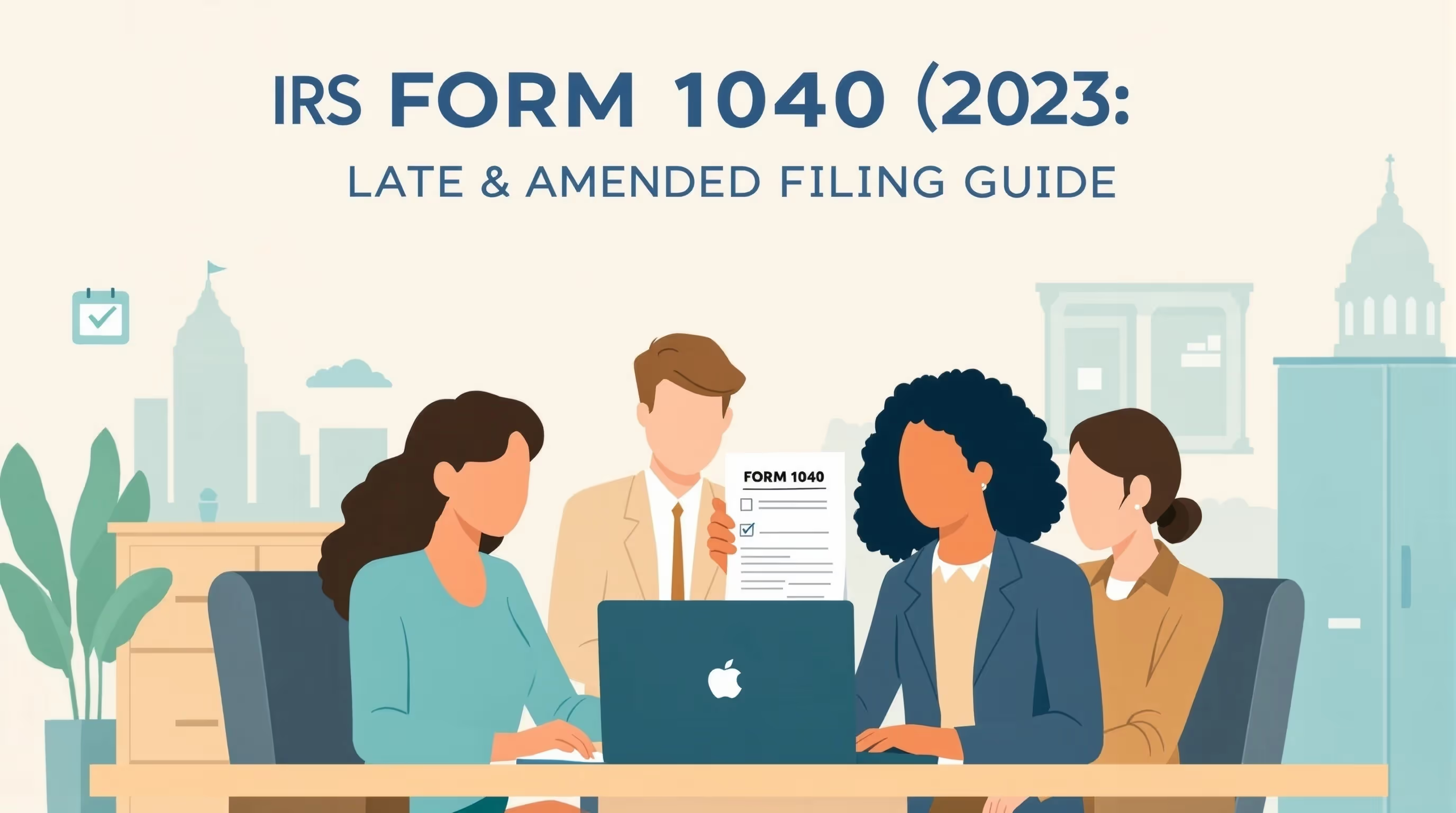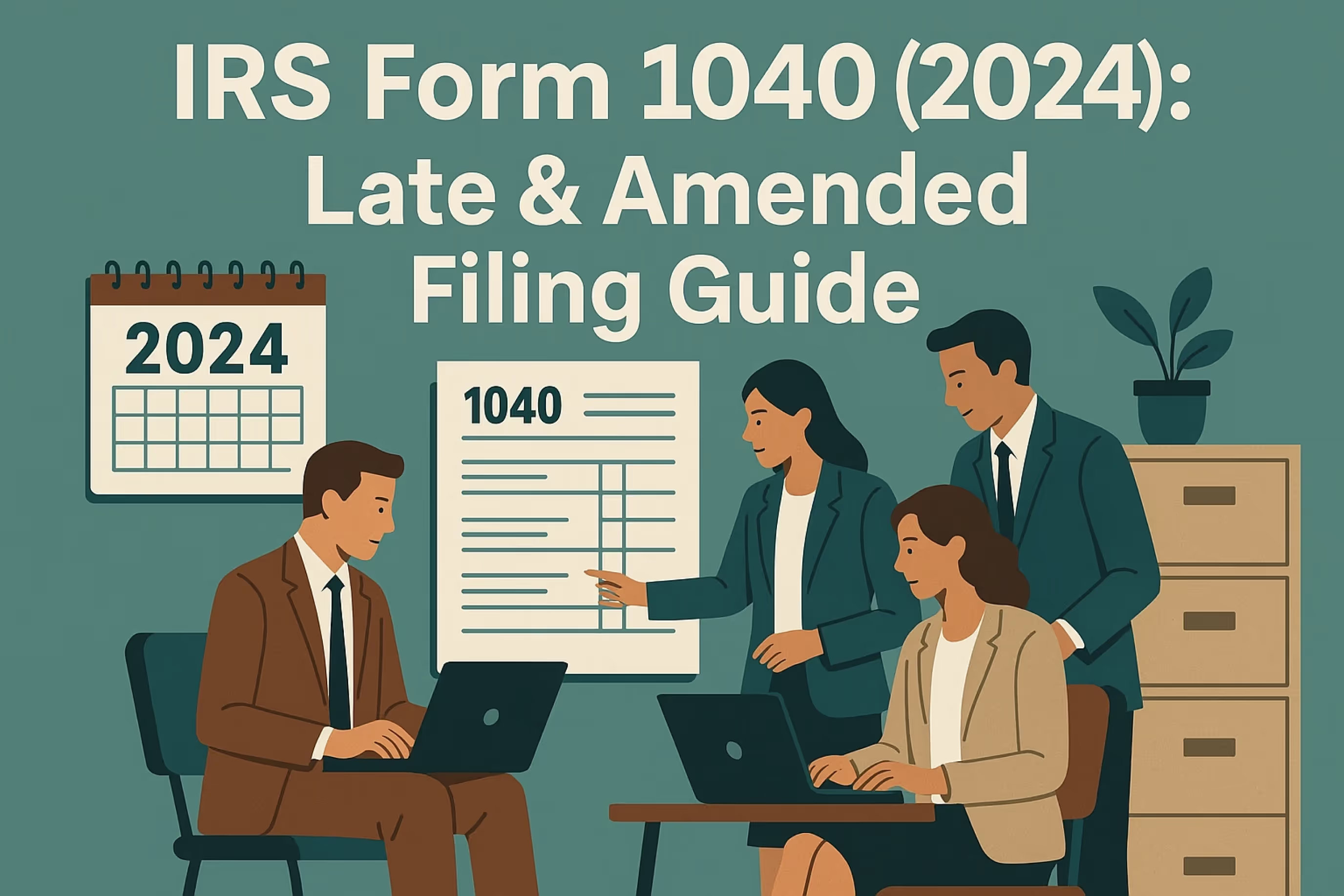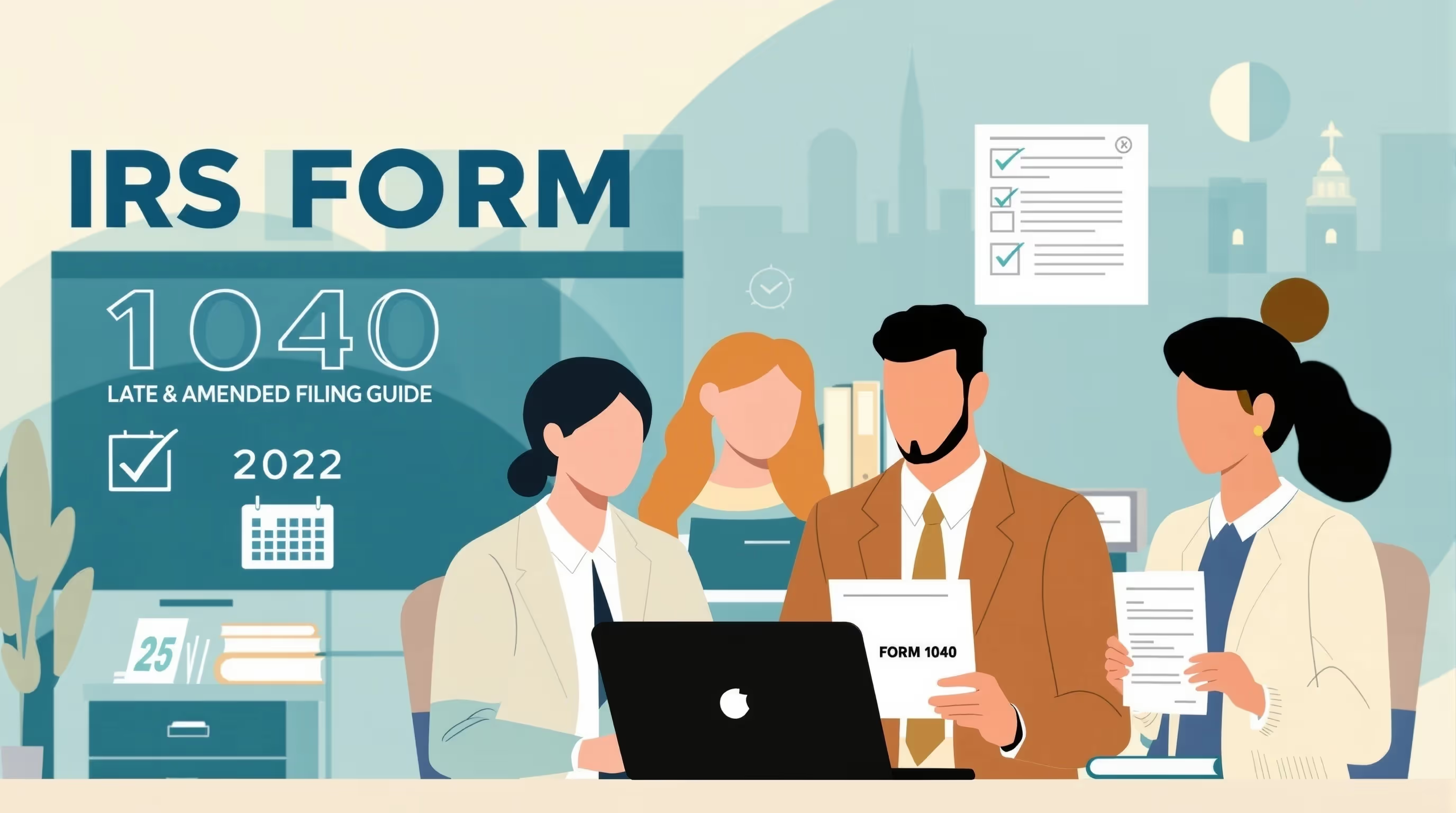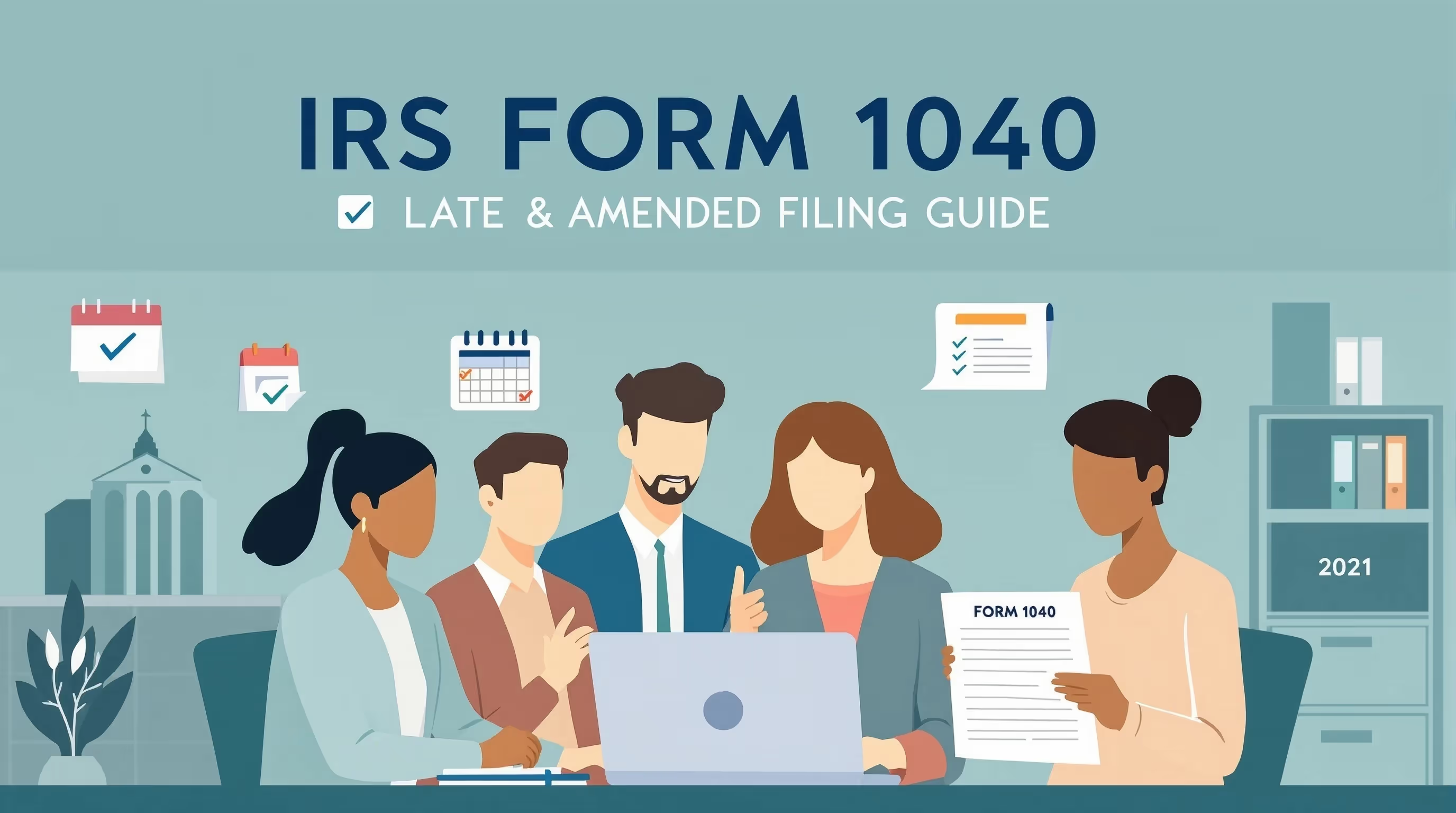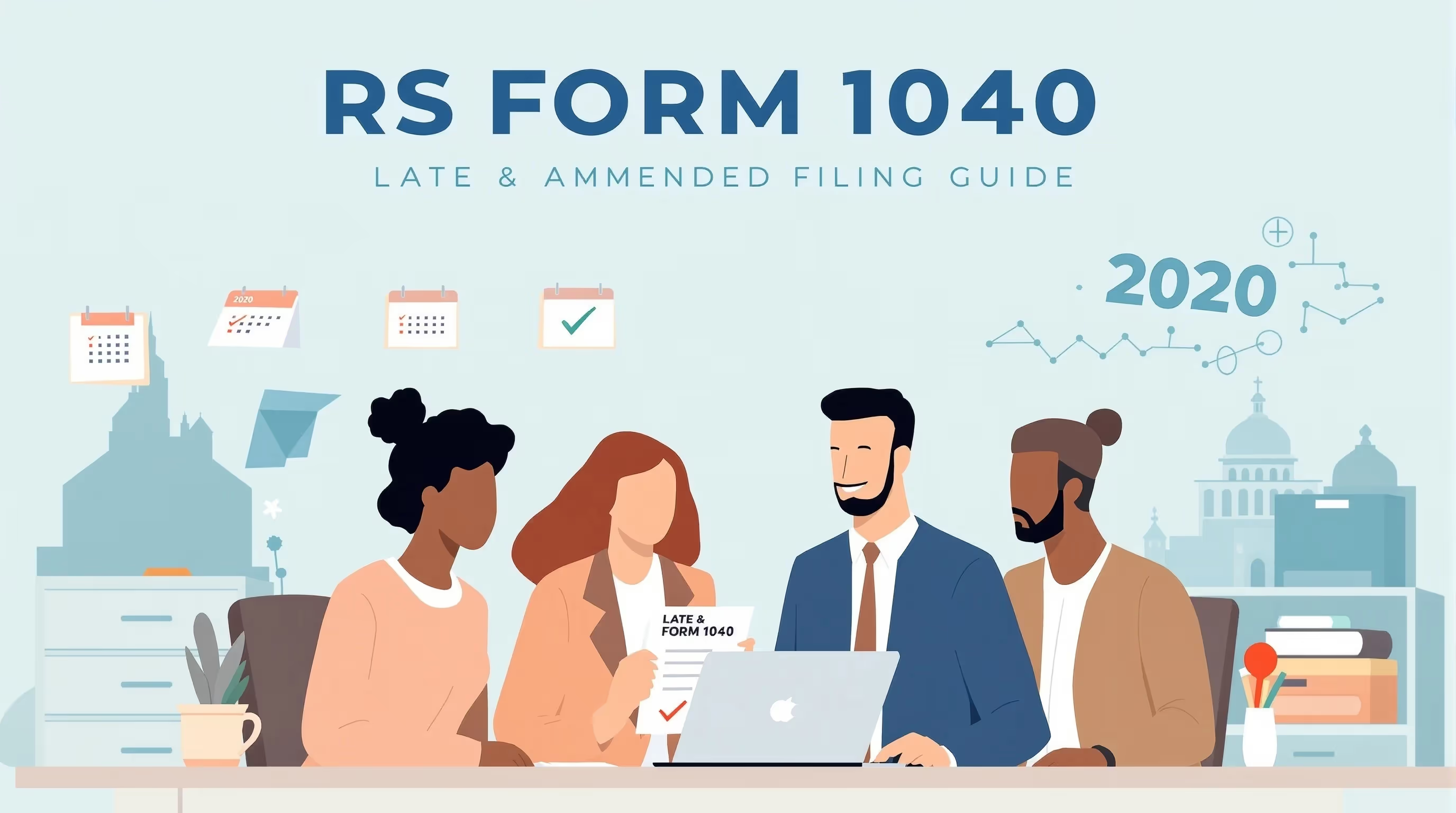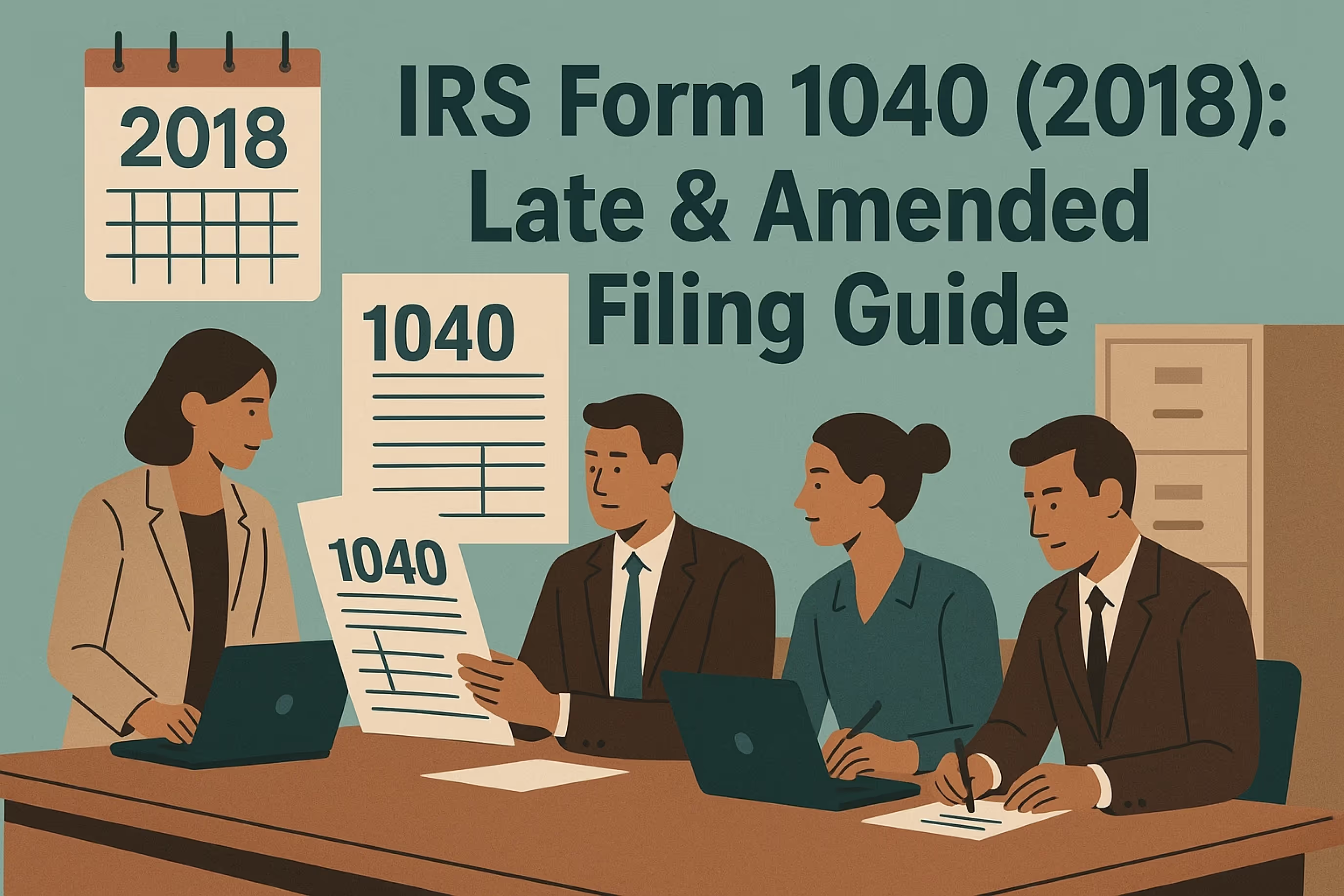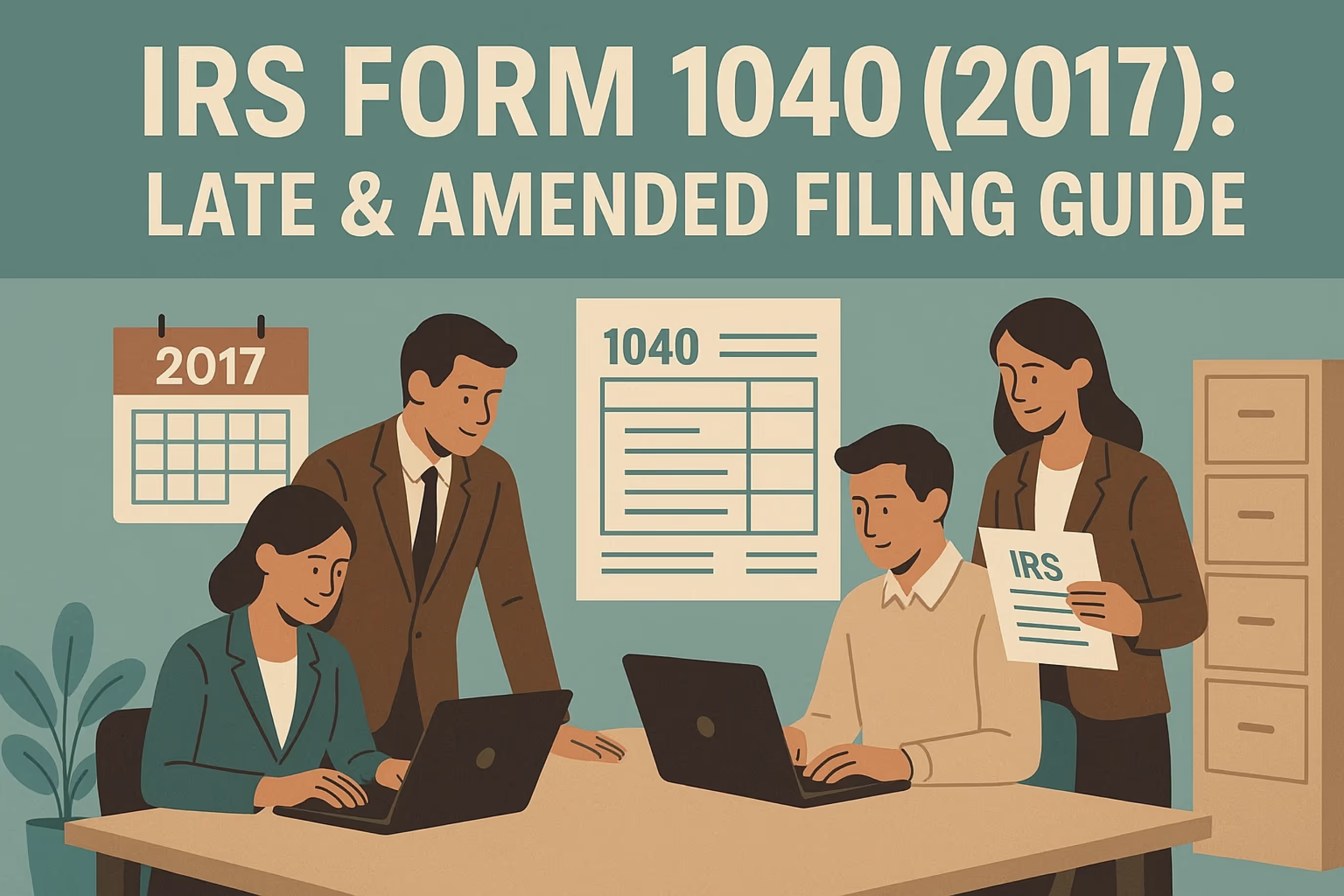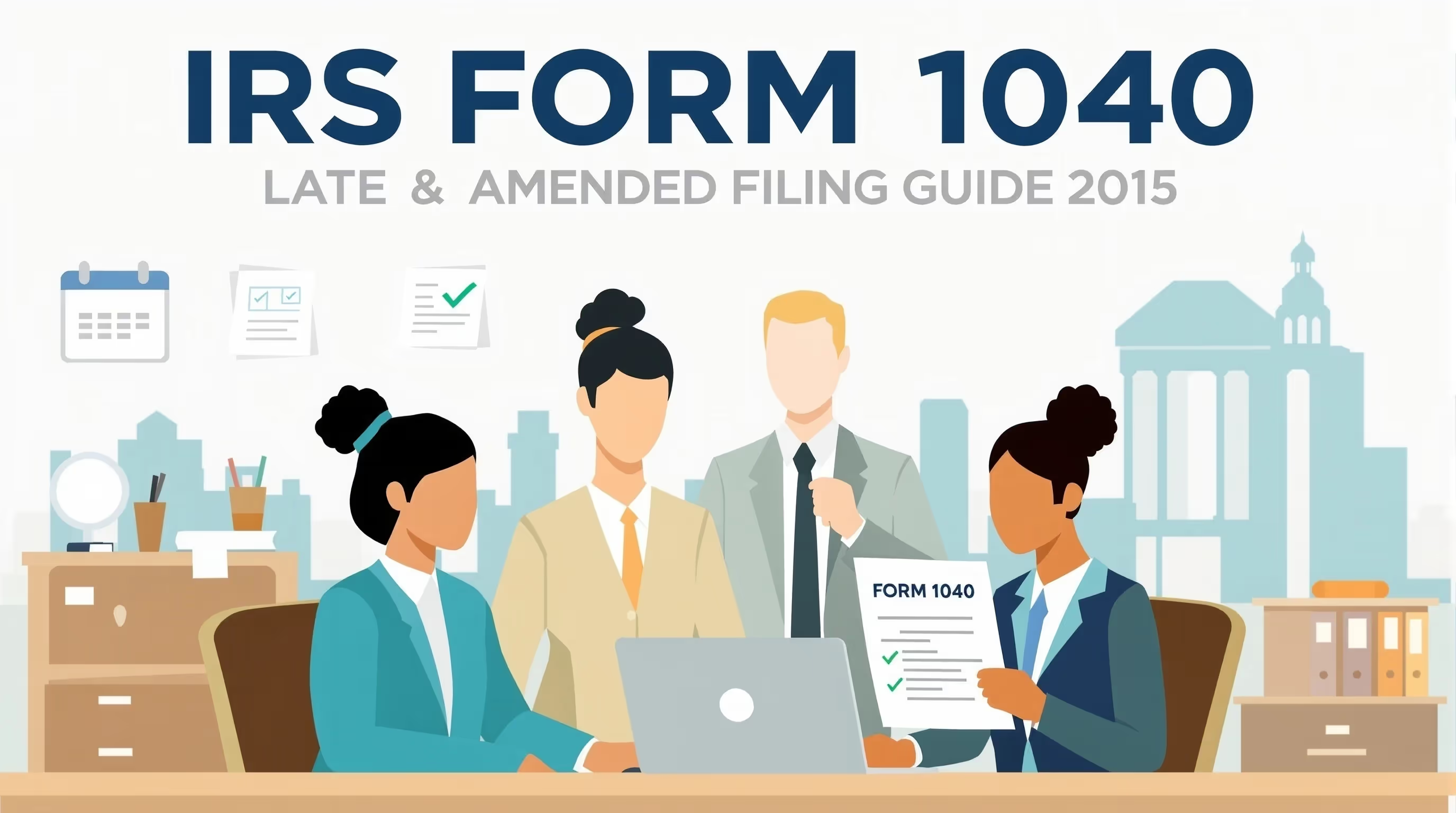IRS Form 1040 (2016): Late & Amended Filing Guide
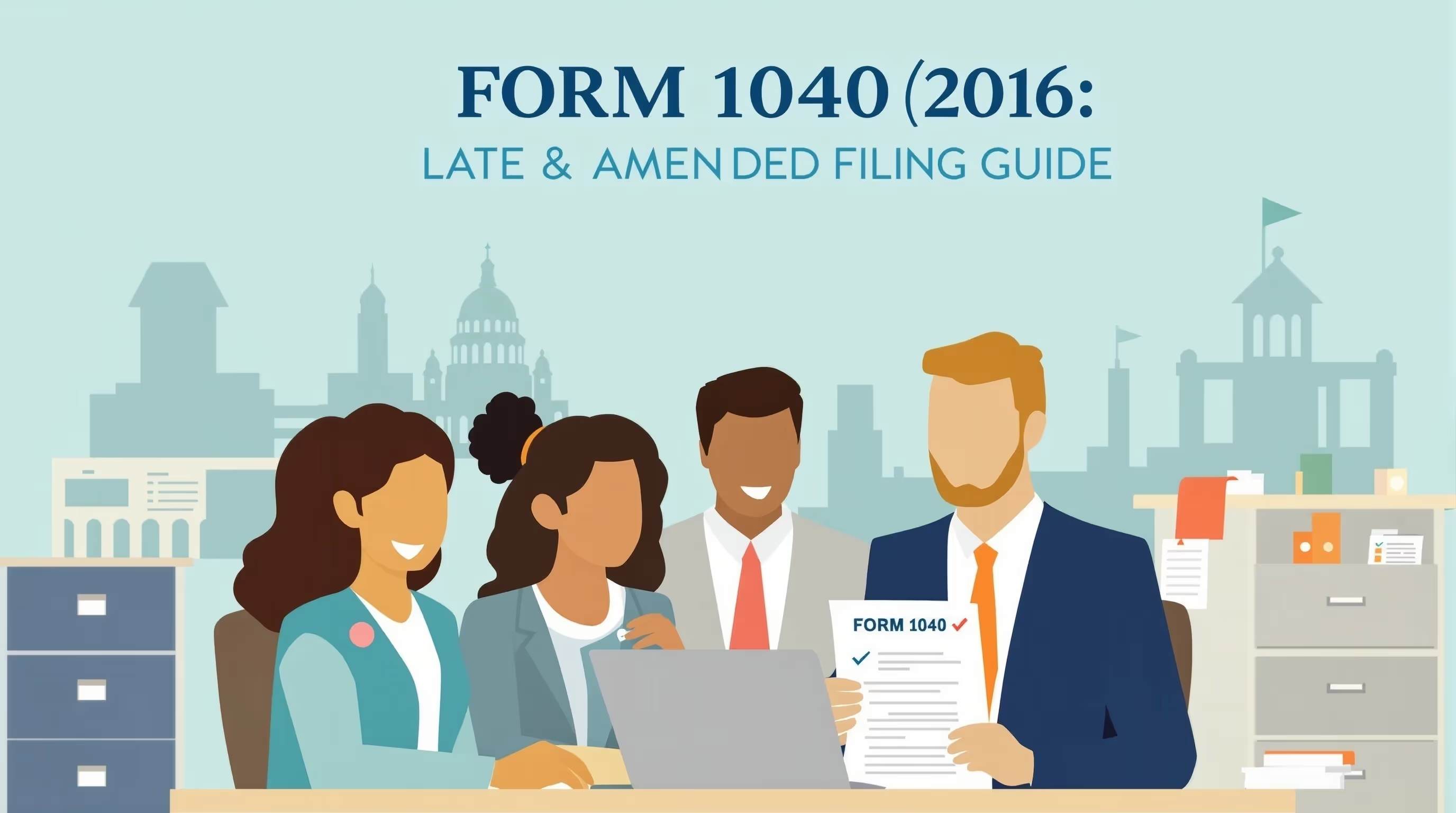
What IRS Form 1040 (2016) Is For
IRS Form 1040 (2016) is the standard federal income tax return used to report income, deductions, income tax credit, and estimated tax payments for the 2016 tax year. It helps taxpayers determine whether they owe taxes or qualify for a tax refund. Anyone earning income above the IRS filing threshold that year was required to file taxes.
In 2016, single filers were required to file if they earned $10,350 or more, and married couples filing jointly were required to file if they earned $20,700 or more. Filing the correct tax forms ensures the IRS determines your federal tax balance, refund, or tax payment accurately.
When You’d Use Form 1040 for 2016 (Late or Amended Filing)
You may need to file a late 2016 tax return if you never submitted your original income tax return or if you received an IRS notice requesting missing information. Filing taxes late can help you avoid larger IRS penalties and demonstrate compliance before additional interest charges apply. Affected taxpayers who missed the original due date can still benefit by filing unfiled federal returns to settle unpaid tax and prevent further enforcement actions.
If you owe tax for the 2016 tax year, filing even now can reduce the maximum penalty and late payment penalties that the IRS charges. Filing late helps you establish eligibility for penalty relief, payment plans, or an extension to pay your remaining balance. Affected taxpayers who missed the original due date can still benefit by filing to settle unpaid tax and prevent further enforcement actions.
Key Rules Specific to 2016
The 2016 tax year had unique amounts and deductions that differ from current rules. The standard deduction was $6,300 for single filers, $12,600 for married filing jointly, and $9,300 for head of household filers. Personal exemptions were $4,050 per person, with phaseouts beginning at $259,400 for single filers and $311,300 for married couples filing jointly.
This was also the first year taxpayers were required to report health insurance coverage on their federal income tax return and reconcile any advance premium tax credit using Form 8962. The IRS offers downloadable instructions and prior-year forms at IRS.gov/prior-year-forms.
Taxpayers could also claim the earned income tax credit, education credits, or other deductions that reduced their overall federal tax. Understanding the 2016-specific rules ensures accurate filing and prevents errors that can lead to additional penalties or interest.
Step-by-Step (High Level)
- Request your tax transcripts from IRS.gov or by calling 1-800-908-9946 to confirm all reported wages and other income, including unemployment compensation or Medicare tax withheld.
- Download the 2016 Form 1040, schedules, and instructions from the IRS Form Help Center for the correct version of each document.
- Complete the form using 2016 rules, deductions, and exemption amounts. Include the correct schedules for that year, such as Schedule A for itemized deductions or Schedule B for interest and dividends.
- Mail your completed return to the correct IRS address for the 2016 tax year. Most old returns cannot be e-filed.
- If you owe money, include a check or money order payable to the U.S. Treasury, or pay by debit card or through your bank account at IRS.gov/payments.
- Consider requesting a short-term plan or an installment agreement using our IRS payment plan guide. The IRS offers several payment plans, depending on your balance.
- Keep copies of all forms and correspondence for at least three years in case the IRS requests verification.
Common Mistakes and How to Avoid Them
- Using the wrong tax forms: Always use the official 2016 Form 1040 and instructions from IRS.gov. Current-year forms have different deductions, credits, and income tax rules that could cause errors or result in IRS notices.
- Forgetting required schedules: Review your 2016 federal income tax return carefully and attach any applicable schedules, such as Schedule A for deductions or Schedule B for interest and dividend income, to avoid delays in processing.
- Omitting Form 8962 for health insurance: If you or a family member had marketplace coverage, include Form 8962 to reconcile your premium tax credit and prevent refund delays or additional IRS penalties.
- Missing income or tax documents: Before filing taxes late, request your wage and income transcript from the IRS to verify all reported income, including unemployment compensation and Medicare tax withheld.
- Ignoring late filing penalties and interest: The IRS charges a 5 percent monthly late filing penalty and daily interest on unpaid tax, so submit your return as soon as possible to reduce extra costs and qualify for penalty relief. Filing late can help reduce costs and qualify you for IRS penalty abatement.
- Incorrect payment method or address: When you owe a tax bill, send your payment by the correct method—check, debit card, money order, or direct bank account transfer—and mail your return to the proper IRS address for 2016.
What Happens After You File
Once you mail your 2016 federal income tax return, the IRS usually takes six to eight weeks to process it. You may receive an IRS notice requesting additional documents or clarification; respond promptly to avoid delays or further penalties. If you owe a tax bill, you can pay by check, debit card, money order, or direct bank account transfer.
If you cannot pay the full amount, you may qualify for a short-term plan, an installment agreement, or penalty relief. Filing late still helps you settle unpaid tax, reduce interest, and prevent further IRS collection actions. If you're dealing with the IRS and prefer to have a professional handle communications, consider assigning a representative using our IRS Power of Attorney guide.
FAQs
Can I still claim a 2016 refund if I file now?
Generally, no. The three-year statute of limitations for claiming a refund from your 2016 tax return expired on April 18, 2020. However, certain affected taxpayers, such as those in combat zones, may still be eligible for an extension of time.
What penalties will I owe for filing my 2016 return late?
The late filing penalty is usually 5 percent per month up to five months, and the late payment penalty is 0.5 percent per month until the full amount is paid. The IRS charges interest on both the tax owed and any penalties that are due. Filing late can reduce total costs and qualify you for penalty relief.
Can I e-file my 2016 return?
Most 2016 tax returns can no longer be e-filed. You must print and mail your return with all forms and schedules. Include your payment by check, debit card, or money order to cover applicable taxes.
What if I missed W-2s or 1099s?
You can request your wage and income transcript from the IRS to identify all income sources, including unemployment compensation. If you cannot obtain copies from your employer, use Form 4852 as a substitute for your return.
What if I am unable to pay my entire balance?
If you cannot pay immediately, you can apply for an installment agreement or a short-term plan. The IRS offers online payment methods and may waive specific penalties if you qualify for reasonable cause relief.








